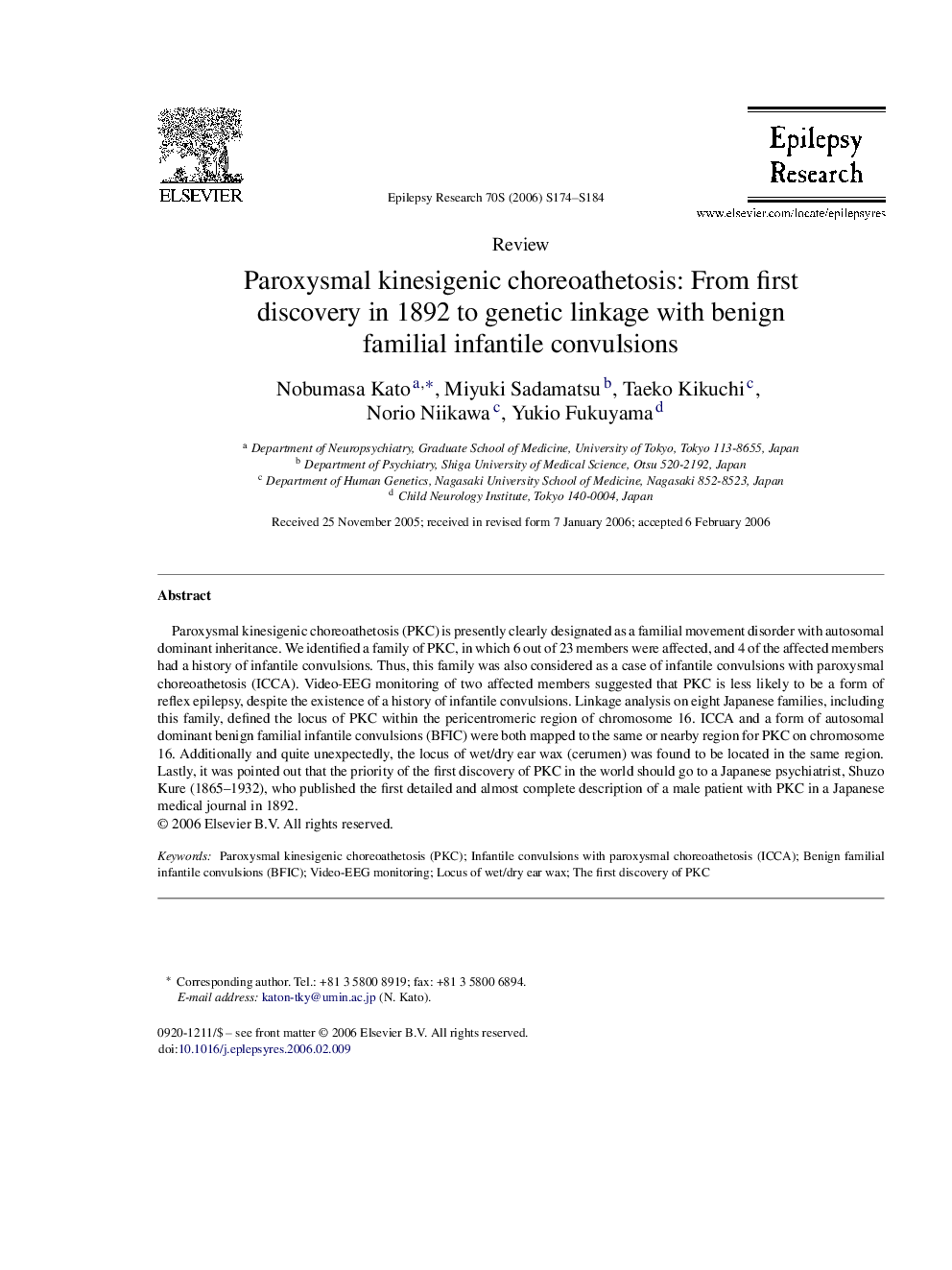| کد مقاله | کد نشریه | سال انتشار | مقاله انگلیسی | نسخه تمام متن |
|---|---|---|---|---|
| 3053333 | 1186157 | 2006 | 11 صفحه PDF | دانلود رایگان |

Paroxysmal kinesigenic choreoathetosis (PKC) is presently clearly designated as a familial movement disorder with autosomal dominant inheritance. We identified a family of PKC, in which 6 out of 23 members were affected, and 4 of the affected members had a history of infantile convulsions. Thus, this family was also considered as a case of infantile convulsions with paroxysmal choreoathetosis (ICCA). Video-EEG monitoring of two affected members suggested that PKC is less likely to be a form of reflex epilepsy, despite the existence of a history of infantile convulsions. Linkage analysis on eight Japanese families, including this family, defined the locus of PKC within the pericentromeric region of chromosome 16. ICCA and a form of autosomal dominant benign familial infantile convulsions (BFIC) were both mapped to the same or nearby region for PKC on chromosome 16. Additionally and quite unexpectedly, the locus of wet/dry ear wax (cerumen) was found to be located in the same region. Lastly, it was pointed out that the priority of the first discovery of PKC in the world should go to a Japanese psychiatrist, Shuzo Kure (1865–1932), who published the first detailed and almost complete description of a male patient with PKC in a Japanese medical journal in 1892.
Journal: Epilepsy Research - Volume 70, Supplement, August 2006, Pages 174–184